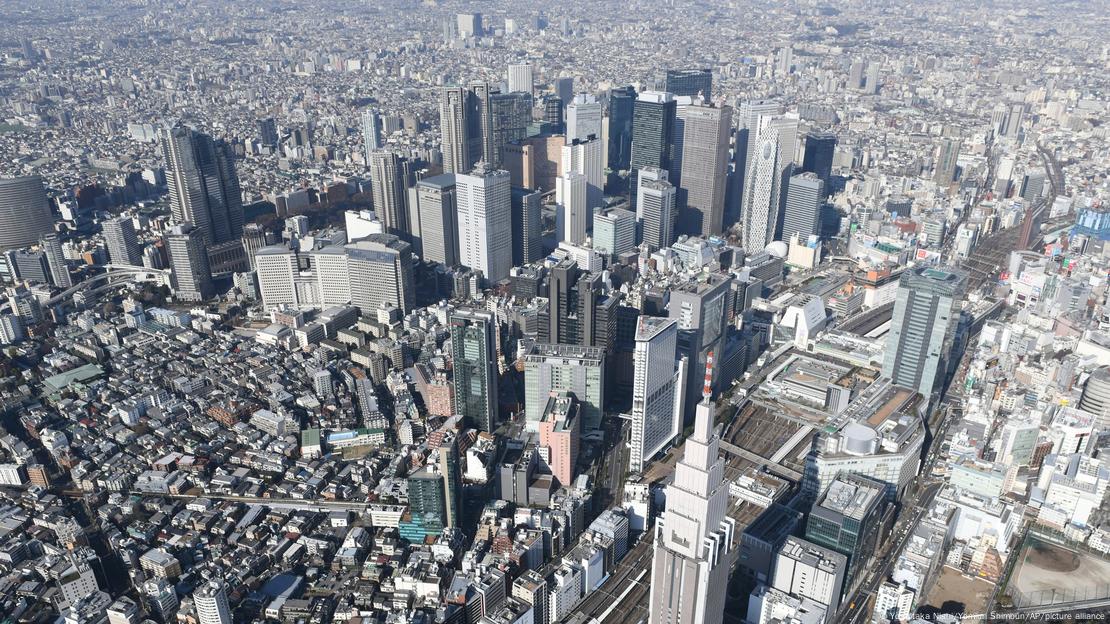Will Japan end its ultraloose monetary policy in 2023?
Negative interest rates and quantitive easing halted decades of deflation in the world's third-largest economy. But will this be the year the Bank of Japan joins other central banks in tightening the money supply?

The world's main central banks have raised interest rates aggressively over the past year to fight decades-high inflation, leaving the Bank of Japan (BOJ) alone in pursuing an ultra-loose monetary policy.
Central banks must balance the need to bring down inflation by hiking rates without crashing their economies, but Japan's huge debt level leaves the world's third-largest economy more vulnerable to any tightening than most.
Japan's debt-to-GDP ratio reached 266% in September — a total debt pile of $9.2 trillion (€8.6 trillion). So if the Bank of Japan raises the current negative interest rates too quickly, the government would struggle to service that gargantuan debt, as would businesses and households.
At the same time, the BOJ is facing increasing criticism that the ultra-loose monetary policy caused a sell-off in the Japanese yen over the past year, which fueled the highest inflation in 41 years.
Japan finally gets inflation
The BOJ had been keen to let inflation rise. After all, Japan has been stuck in deflation for the best part of two decades and policymakers wanted to break a 'wait for cheaper prices' mindset among Japanese consumers.
Despite rising sharply, Japanese inflation is much lower than in the West, rising 3.7% on an annualized basis in November versus 7.1% in the US.
The yen has been hurt by the soaring US dollar. At one point last year, the yen was nearly 30% weaker against the dollar, which made imports more expensive for Japanese consumers and businesses, including energy costs. Real wages, meanwhile, fell for seven straight months last year.
Investors used to consider the yen as a safe haven currency, but a surge in the dollar over the past year and concerns about the strength of the Japanese economy have undermined that position.
"A safe haven currency typically needs to be backed by a strong trade surplus — such that there is a natural demand for a currency in a crisis. The JPY (yen) has lost that backing from trade," Chris Turner, global head of markets at ING, wrote in a research note last year.
Added to the above, the vulnerability of the Japanese economy as it recovers from the COVID-19 pandemic means that any hint of policy change is therefore likely to jolt financial markets.
Central bank tweaks bond yield control policy
Just before Christmas, that exact thing happened when the BOJ relaxed a mechanism to control the yield on its 10-year bonds, known as yield curve control. The central bank will now allow 10-year bond yields to fluctuate by 0.5% of its target of zero, instead of 0.25%.
Rajiv Biswas, Asia-Pacific Chief Economist, S&P Global Market Intelligence, told DW that the BOJ decision was made to "improve market functioning" after a "deterioration in the functioning of the bond markets during 2022."
Those distortions, however, were created by the BOJ, which has been aggressively buying Japanese bonds. As of last month, the BOJ owned 51.4% of all Japanese treasuries, according to Nikkei group company QUICK. This is up from 10% in 2013. There are days when there are no trades in the Japanese bond market because the BOJ has effectively become the entire market.

Better returns in dollar assets
Bond investors have pulled out of Japan seeking higher returns, particularly in dollar-denominated assets. After all, the yield on the US 10-year Treasury is 3.85%, compared to a return of 0.41% on Japan's 10-year bond.
Last month, the BOJ conducted more unscheduled bond buying, which Biswas said had "increased debate in financial markets about whether further changes to the BOJ's yield curve policy will be needed in early 2023."
While some analysts saw last month's move as the first sign of a much greater monetary policy pivot, Saisuke Sakai, chief economist at Mizuho Research and Technologies isn't convinced.
"The BOJ doesn’t want to be responsible for causing an economic downturn, and the new governor [who will be appointed in April] wants to avoid such a failure, so it's likely that they will take a more cautious stance," he told the Hong Kong-based South China Morning Post.
Others think the BOJ will have no option but to catch up with the rest of the world, although it will have to tread carefully.
"They are about to chart a course to follow the same direction as other major central banks, in terms of tightening their rates," Regina Schleiger, director of central bank research at SGH Macro Advisors told NPR's Marketplace radio show.
Pandemic recovery set to strengthen
As inflation starts to abate, as a result of falling oil and gas prices, some economists think the Japanese economy can continue its post-pandemic recovery, thanks to robust domestic demand due to high household savings, the return of tourism from abroad and a willingness by Japanese firms to boost capital spending.
"I think foreign tourists will be spending more, so inbound tourism will be the strongest driving force (for the Japanese economy)," Hideki Matsumura, chief economist at the Japan Research Institute told the Japan Times Tuesday.
The Japanese government also announced plans to boost defense spending by 30% next year, worth 114 trillion yen ($839 billion, €795 billion), which could also provide a major tailwind for the economy at a time of heightened volatility in financial markets as a result of any BOJ's policy pivot.







